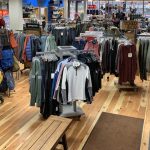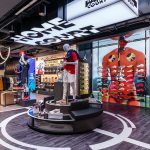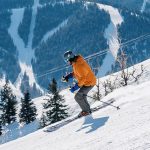According to SIA's recently released Retail Audit, snow sports market sales declined 4.4% in dollars and 2% in units for the 2008/09 season. This season brought in a total of $2.82 billion compared to last seasons $2.95 billion in sales. Current season equipment took the heaviest blow, 75,000 fewer alpine skis, 8,000 fewer Nordic skis, and 34,000 fewer snowboards sold this season.
Fear about economic security kept consumers, retailers and suppliers in a cautious mood this season. The economic downturn that began in earnest this October had an unprecedented impact on the snow sports market this season. Analysis of historical data reveals that less severe economic events in the past have had little impact on the snow sports marketplace. However, significant reductions in wealth and job insecurity at the highest levels resulting from this particular economic decline predicated a downward shift in consumer spending even in the highest income demographics. The peculiarities of this recession resulted in strangled credit markets, higher costs and reduced sales in the snow sports market that had significant negative impacts on both retailers and suppliers.
“Overall, we did great on selling stuff; we just didnt make enough money on it. Some retailers over bought, then panicked and put stuff on sale early. That was one of the problems. In March, we just ran out of customers. We did do well with selling median priced items like Burton and Rome boards, boots and bindings,” said Bill Langlands, Owner, Darkside Snowboards.
“We saw some growth in our sales this season but were having some trouble with past due receivables and pre-season orders are smaller than usual. We are planning on some mid-season orders next season if snowfall is good,” Ben Anderson, Founder, Icelantic Boards.
Current season equipment sales declined 12% compared to last season and by March 31st inventories of unsold equipment had swelled almost 19% in dollars and 12% in units compared to end of season inventories last year. Retailers slashed prices on equipment to bring customers in and move inventory. In fact, consumers purchased more than 1/4 all alpine skis and snowboards sold this season at prices that were even with or below the average retail cost. Margins in specialty shops were slimmer across all categories this season and average costs increased more than 10% across the board.
“The end of the season was soft for us. Our focus was reducing inventory levels to get in a good position for next year. We also concentrated on delivering customer service and quality to the customers that we did have. Guests were buying the basics; just what they needed and little else. We werent on fire sale; we just worked hard on servicing our loyal guests. We have found that peopleare willing to spend more for addedvalue, service, convenience and expertise,” said DerekJohnson, Managing Director, Aspen Skiing Company.
Despite the negative impact the current economic recession had on the snow sports this season, there were some noteworthy trends:
– Reverse camber snowboards made a huge impact on the market this year and reverse camber models like the Skate Banana flew off store shelves despite cautionary spending in other categories.
– Everyone was buying more board underfoot this season as fat ski sales stayed healthy and fat ski systems sales soared
– The AT category, although difficult to track, appears to be growing with a 60% increase in boot sales
– Decent snow kept resorts busy, according to NSAA some even broke attendance records this season
– Gloves, helmets, wax, and goggles sales grew this season as participants ignored the economy and paid attention to the snow on the slopes















